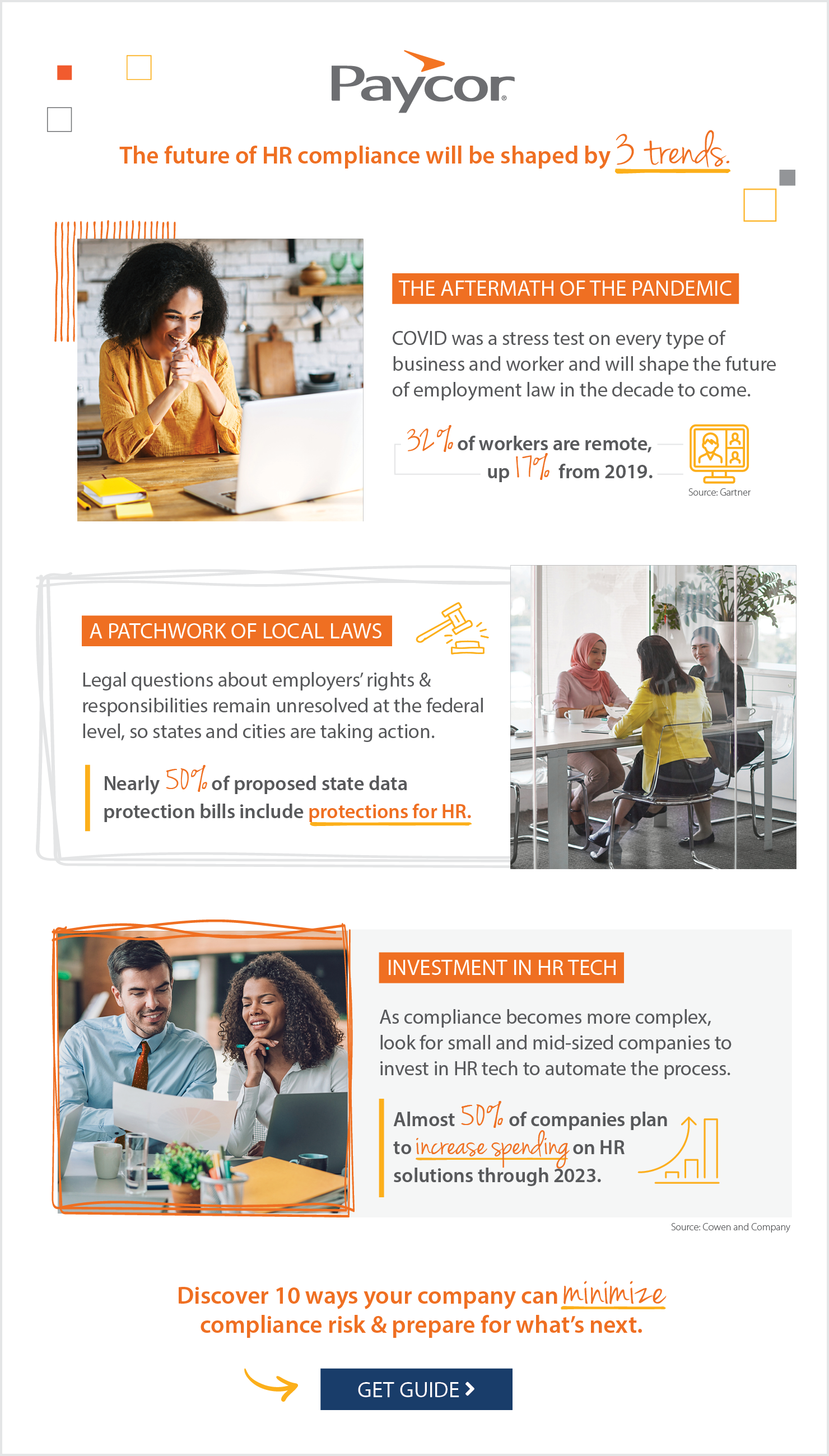The future of HR compliance is being shaped by workers’ post-pandemic expectations and a patchwork of complex state and local laws.
From pay transparency to data security and “ban the box” momentum, discover the top 10 compliance trends that will shape the way we do business in the decade to come.
Minimize your risk and stay ahead of the curve.










